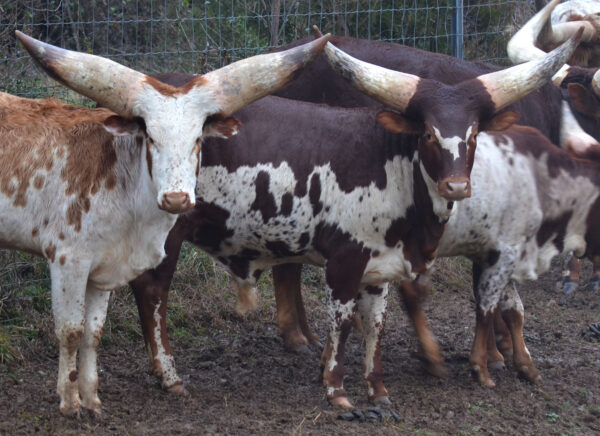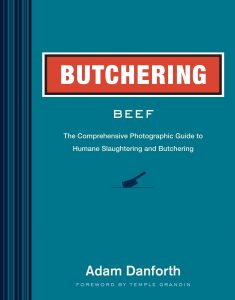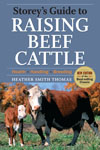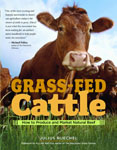
Breed Facts
Status:
Recovering
Use:
Beef, Dairy
Adult Weight:
900 – 1600 lbs.
Temperament:
Docile
Experience Level:
Novice – Intermediate
Notes:
Efficient production; huge horns; gentle nature; can tolerate temperature extremes; milk high in butterfat
Country of Origin:
Africa (Bos indicus)
ANKOLE-WATUSI CATTLE
Ankole-Watusi cattle, with their extra-large horns, are among the most striking members of the bovine kingdom. Herds resemble slow-moving, multicolored forests of bare trees as their horns sway with every step. The Ankole-Watusi breed is part of the Sanga family of African cattle breeds which originated over 2,000 years ago from a combination of the Egyptian (Hamitic) Longhorn cattle and the Zebu Longhorns that arrived from India.
Sanga cattle spread throughout eastern Africa, and many distinct breeds evolved. Cattle have traditionally been valued in Africa as ceremonial animals and symbols of wealth and power. Their ownership established one’s position in society, and the beauty of one’s cattle herd – especially the shape and size of their horns – was significant.
Natural selection also played a role in creating cattle that were both hardy and efficient grazers able to thrive on rough forage. The horns are part of adaptation to a hot climate by allowing dispersal of excess body heat. This unusual combination of selection pressures has resulted in a resilient breed of great beauty. Particularly remarkable are the cattle of Uganda, Rwanda, and Burundi. In Uganda, the Nkole tribe’s variety is called the Ankole, while in Rwanda and Burundi, the Tutsi tribe’s variety is called the Watusi. When the cattle were exported from the region to Europe and later to America, these strains were combined.
Unlike the purposeful importations of many breeds, the path of the Ankole-Watusi to the US was indirect if not accidental. The cattle were initially exported from East Africa to Europe during the early 1900s for use as exhibition animals in zoos. United States zoos and individual breeders then imported Ankole-Watusi cattle from Europe during the 1920s-1930s.
In the last few decades, most zoos have dispersed their collections, putting most of the cattle into the hands of private breeders. The Ankole-Watusi International Registry was formed in 1983 to promote the breed in North America. Founding members shared a commitment to the Ankole-Watusi, though they have had different priorities for the breed. Some emphasized its exotic appearance and others its commercial qualities. The population of cattle in the breed’s home region of Rwanda, Burundi, and Uganda has been large, although it has experienced dramatic declines due to civil war, economic upheaval, and government-supported crossbreeding schemes.
The Ankole-Watusi is medium-sized and elegant in appearance. They should have a straight topline and a sloping rump, and they may have a neck hump but it is not required. Cows weigh 900-1,200 lbs. and bulls 1,000-1,600 lbs. The most noticeable feature of the breed is its horns, which have a large base and are long and symmetrical. Crescent or lyre-shaped horns are the most desired in Africa, but American breeders have also selected for a lateral horn conformation that increases the length from tip to tip. Cattle may be solid-colored or spotted. Dark red predominates, although dun and black also occur. Some unusual spotting patterns are found in the breed, including one in which color runs across the top of the animal with white on the lower body. Cattle may also have many different types of speckling.
Calves are small and have a low birth weight (30-50 lbs.). This is useful when bulls are used in a first breeding with other breeds. Ankole-Watusi milk is around 10% fat, so some farmers use the breed for crossbreeding to boost butterfat content in their herds.
Ankole-Watusi were developed in the African climate where temperatures may range from 20-120 degrees (Fahrenheit), so they can tolerate extremes in temperatures well due to their large horns. Blood circulates through their unique horns, is cooled, and then returns to the body of the animal, allowing excess body heat to disperse.
While sometimes dismissed as a novelty, the Ankole-Watusi has much to offer the US beef industry. Adaptation to harsh environments, excellent maternal abilities, high butterfat milk, and lean beef are among its assets. It is a gentle, but it may be best suited to breeders accustomed to dealing with horned cattle.
Did you know:
The Conservation Priority List is organized historically. Breeds originating in North America are listed first, followed by those imported before 1900 and those that came
to our shores later. Many of these breeds were founded in the United States. That means we have a special responsibility for their conservation. You can invest in living history for as little as $4 per month. Click here to become a Conservation Champion today!
You may be interested in…

Breed Facts
Status:
Recovering
Use:
Dual
Adult Weight:
900 – 1600 lbs
Temperament:
Docile
Experience Level:
Novice – Intermediate
Notes:
African origin (Bos indicus), efficient production, huge horns, gentle nature
You may be interested in…





